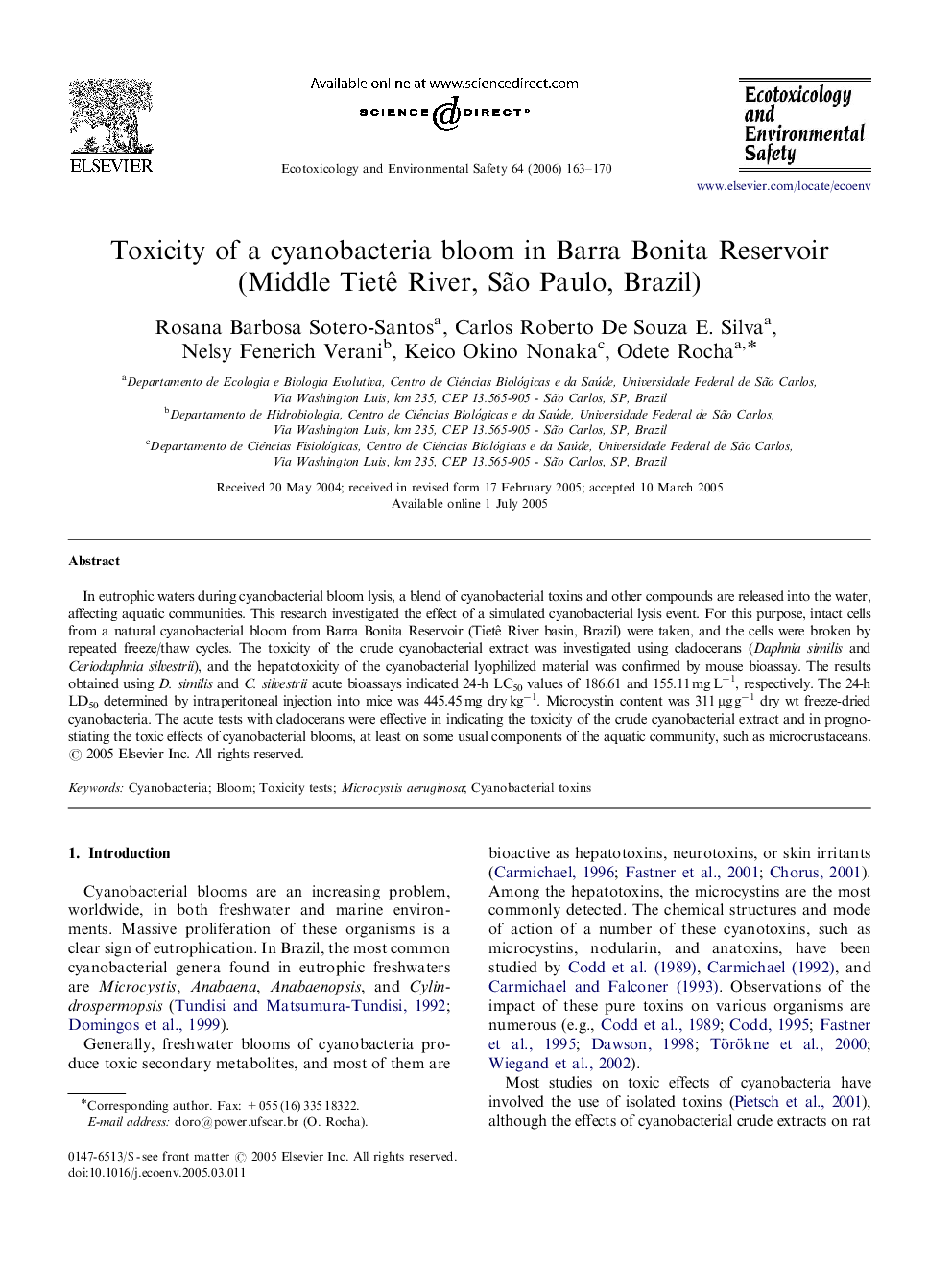| Article ID | Journal | Published Year | Pages | File Type |
|---|---|---|---|---|
| 4422482 | Ecotoxicology and Environmental Safety | 2006 | 8 Pages |
In eutrophic waters during cyanobacterial bloom lysis, a blend of cyanobacterial toxins and other compounds are released into the water, affecting aquatic communities. This research investigated the effect of a simulated cyanobacterial lysis event. For this purpose, intact cells from a natural cyanobacterial bloom from Barra Bonita Reservoir (Tietê River basin, Brazil) were taken, and the cells were broken by repeated freeze/thaw cycles. The toxicity of the crude cyanobacterial extract was investigated using cladocerans (Daphnia similis and Ceriodaphnia silvestrii), and the hepatotoxicity of the cyanobacterial lyophilized material was confirmed by mouse bioassay. The results obtained using D. similis and C. silvestrii acute bioassays indicated 24-h LC50 values of 186.61 and 155.11 mg L−1, respectively. The 24-h LD50 determined by intraperitoneal injection into mice was 445.45 mg dry kg−1. Microcystin content was 311 μg g−1 dry wt freeze-dried cyanobacteria. The acute tests with cladocerans were effective in indicating the toxicity of the crude cyanobacterial extract and in prognostiating the toxic effects of cyanobacterial blooms, at least on some usual components of the aquatic community, such as microcrustaceans.
